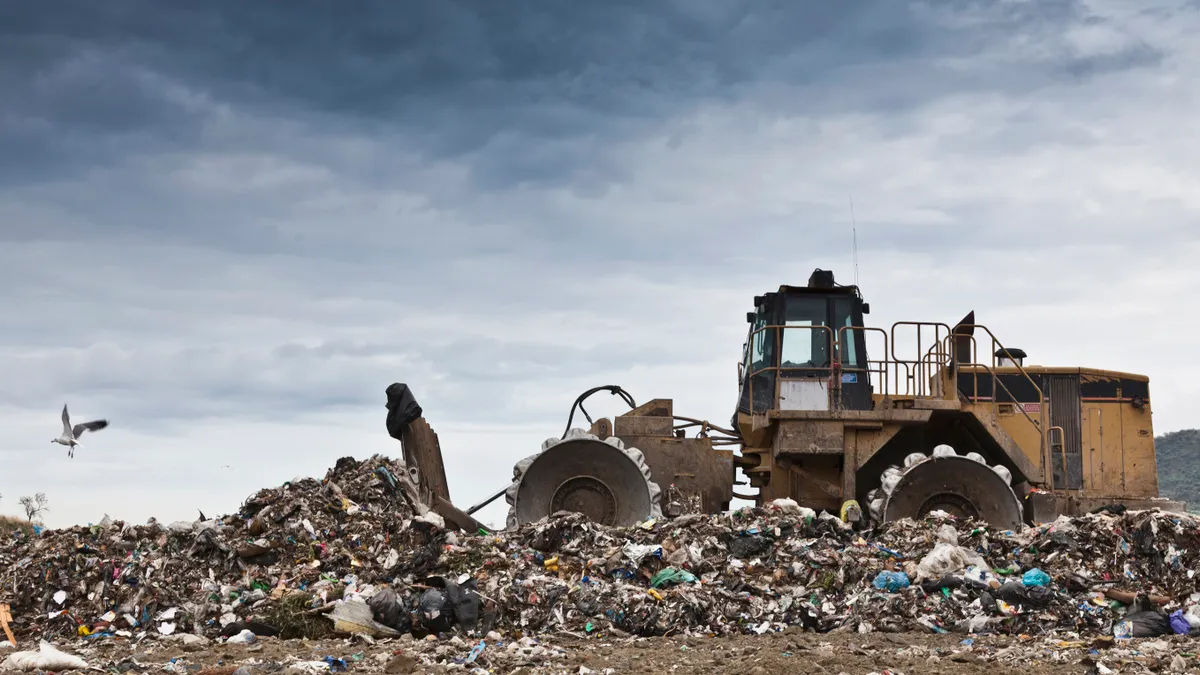Dive Brief:
- 2016 was an improved year for injuries and illnesses among solid waste collection workers, according to new data from the Bureau of Labor Statistics (BLS). The incidence rate per 100 full-time employees decreased from 6.6 in 2015 to 5.2 in 2016. The overall "waste management and remediation services" rate, which also includes hazardous waste and other sectors, declined from 4.5 to 4.0
- The National Waste & Recycling Association (NWRA) hailed this as a "major" improvement in a press release. President and CEO Darrell Smith said this data "illuminates the progress being made to improve safety performance nationwide" and touted NWRA's various initiatives. The Solid Waste Association of North America (SWANA) also said this trend was positive, while pointing to areas for further work. "It's still too high and we need to continue to work to reduce injuries and illnesses," SWANA CEO David Biderman told Waste Dive. "SWANA is particularly concerned about small haulers who do not have strong safety programs and need help in improving their safety culture."
- The 2016 data for MRF and landfill employees was less positive. At MRFs, incidence rates per 100 full-time employees increased from 5.1 in 2015 to 6.0 in 2016. For landfills, the rate increased from 3.5 to 4.9. In its release, SWANA called this trend "troubling." NWRA's release did not specifically comment on either category.

Dive Insight:
According to BLS, the injury rate for all U.S. occupations saw a slight decline from 3.0 to 2.9 and was lower than the overall waste category. While year-to-year data comparisons may not account for fluctuations in reporting or other factors, the waste industry is still in a better place than it was 10 years ago, and collection worker safety has particularly improved. The topic remains a high priority in the form of Slow Down to Get Around advocacy, local safety education events and ongoing training opportunities. The 2016 BLS data also showed a positive trend for solid waste combustion facilities, with an incidence rate decline from 2.0 to 1.0.
Yet the uptick in MRF and landfill rates is an area that will continue to draw attention in the months ahead. When BLS releases its 2016 fatality data next month, the number of landfill incidents is expected to rise. For MRFs it is also possible that the new injury data, and any potential fatality data, could even be undercounted due to staffing arrangements. As highlighted in the ongoing joint employer debate, it is common for MRFs to rely on temporary workers. Because these workers aren't considered full-time employees of the MRFs, any incidents may be reported by their staffing agency instead. This data goes into a much broader category of temporary workers across all industries and is harder to track.
Executives have recognized that safety training can be a challenge for these temporary workers, but they may be playing an even larger role in the industry in the near-term. Multiple companies have recently been staffing up to improve their quality in response to China's tightening contamination standards. In areas where low unemployment rates make it harder for companies to meet growing growing labor demands, the interest in automated mechanical solutions has been increasing. This inherently improves safety, and is an area that multiple companies are watching as the pace of development accelerates rapidly. Though it isn't an answer for workers that are at risk right now. Injury rates are still a problem in the industry and the full measure of 2016 success can't be taken until fatality data is released in December.














